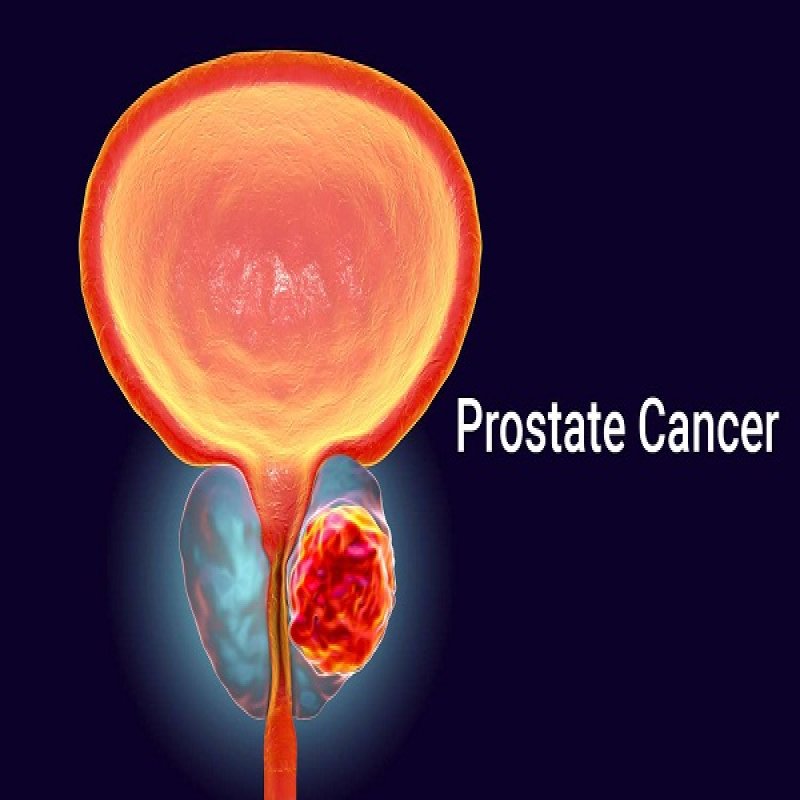
Prostate cancer is the second-most common cancer among men, but it is often treatable. Due to a lack of awareness, men often tend to ignore their prostate problems. If you have prostate cancer or are close to someone who does, knowing what to expect can help you weather the storm. Here we tell you all about prostate cancer, including risk factors, symptoms, diagnosis, and treatment. Read on!
Prostate cancer occurs in a man’s prostate. The prostate lies below the bladder, in front of the rectum, and surrounds the upper part of the urethra. The prostate regulates bladder control and produces the seminal fluid that nourishes and transports sperm. Prostate cancer usually grows slowly and initially remains confined to the prostate gland. It usually affects men over the age of 50, and all men are at risk for prostate cancer. However, some men are at increased risk of prostate cancer.

Risk Factors
The following factors may increase a man’s risk of developing cancer of the prostate gland:
- Race: Research shows that African American men are approximately 70% more likely to develop prostate cancer in their lifetime than Caucasian or Hispanic men.
- Age: With age, the risk of developing prostate cancer increases. Research suggests 1 in 15 men in their 60s will develop prostate cancer.
- Family history: Men with close family relatives, such as a father or brother, who have or have had prostate cancer are twice as likely to develop the disease.
- Diet: A diet high in saturated fat and preserved foods have been shown to increase the risk.
- Obesity: Obese people are at a higher risk.
- High testosterone levels: Men using testosterone therapy are at a higher risk as an increase in testosterone stimulates the growth of the prostate gland.
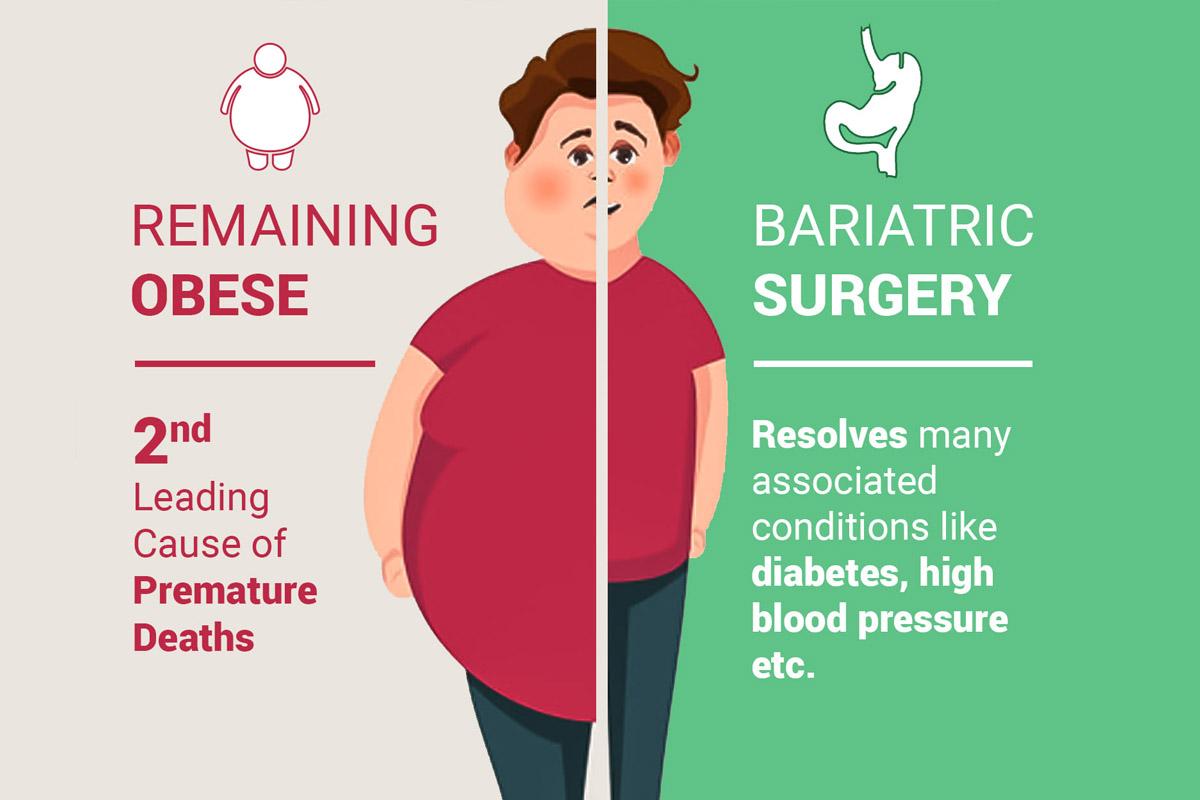
Prostate Cancer Signs
Prostate cancer may not cause signs or symptoms in its early stages but at an advanced stage it may cause signs and symptoms such as:
- Trouble urinating
- Decreased force in the stream of urine
- Blood in the urine
- Blood in the semen
- Pain in the lower back, thighs, or hips
- Discomfort in the pelvic area
- Bone pain
- Erectile dysfunction
/prostate-cancer-symptoms-5b2bc3c83de4230036b1363b.png)
Causes
The exact cause of prostate cancer is still unclear. Researchers are trying to learn how the risk factors influence prostate cells to become cancerous. However, on a basic level, prostate cancer occurs due to changes in the DNA of a normal prostate cell.
Cancer is partly caused due to DNA changes (mutations) that turn on oncogenes (genes that have the potential to cause cancer) or turn off tumor suppressor genes. DNA changes are either inherited from a parent or acquired during a person’s lifetime.
/dna-structure-562597795-5ae77532c06471003681d684.jpg)
Prostate Cancer Screening
The initial screening involves two tests:
- Prostate-specific antigen (PSA) test: A blood sample is drawn from a vein in your arm and analyzed for PSA, a substance that’s naturally produced by your prostate gland. It’s normal for a small amount of PSA to be in your bloodstream. However, a higher-than-normal level is indicative of prostate enlargement, infection, inflammation, or cancer.
- Digital rectal exam (DRE): A DRE involves the examination of your prostate by the doctor. The doctor inserts a gloved, lubricated finger into your rectum to examine your prostate. If he or she finds any abnormalities in the texture, shape, or size of your gland, they will recommend further tests.
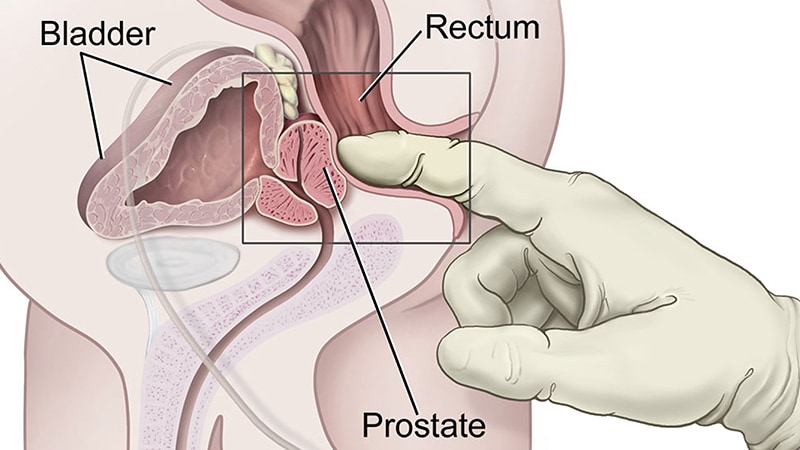
Prostate Cancer Diagnosis
If there is an abnormality on a PSA test or DRE test, your doctor may recommend tests to determine whether or not you have prostate cancer. These tests may include:
- Ultrasound: A transrectal ultrasound helps your doctor to further evaluate your prostate. A small probe is inserted into your rectum, which uses sound waves to make a picture of your prostate gland.
- Biopsy: In a prostate biopsy, a thin needle is inserted into the prostate to collect tissue. A lab will then analyze the tissue sample to determine whether cancer cells are present.

Determining whether Prostate Cancer is Aggressive
If a biopsy confirms the presence of cancer, the next step, called grading, helps determine the aggressiveness of the cancer. The tissue samples are studied to compare the cancer cells with healthy prostate cells. The more the cancer cells differ from the healthy cells, the faster the cancer will grow and spread. More aggressive cancer cells have a higher grade.
Scoring can range from 2 (non-aggressive cancer) to 10 (very aggressive cancer) based on the Gleason score, a scale used to evaluate the grade of the cancer cells.
Stages
The different stage indicates how advanced the cancer is. There are 4 prostate cancer stages from 1 to 4, with 4 being the most advanced.
The stages depend on the following factors:
- The size or extent of the tumour
- The number of lymph nodes involved
- Whether or not cancer has spread to other sites or organs
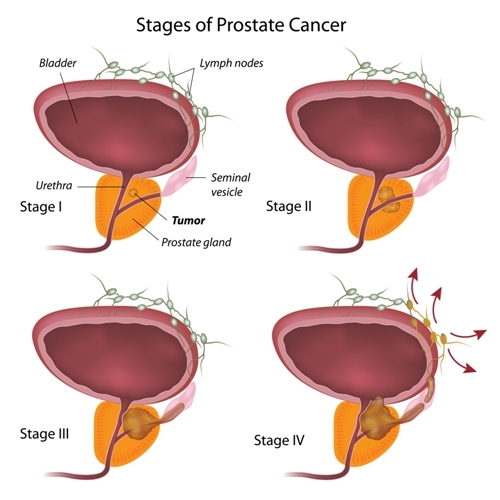
Prostate Cancer Treatment
Prostate cancer treatment depends on several factors. These include how fast the cancer is growing, how much it has spread, one’s overall health, as well as the benefits and side effects of the treatment. The treatment options include:
Active Surveillance
Active surveillance can be beneficial for any man with prostate cancer who is low-risk and not very aggressive. It is the preferred strategy for men with the least aggressive type of prostate cancer. Active surveillance involves repeated blood testing for prostate-specific antigen, a prostate biopsy, rectal examinations, and sometimes magnetic resonance imaging (MRI) of the prostate to monitor the size and spread of cancer. Curative treatment with either surgery or radiation therapy will be the next step of treatment if the cancer grows or becomes more aggressive.

Radiation Therapy
Radiation therapy doesn’t kill the cancer cells immediately but damages their DNA and diminishes their capacity to reproduce. The body then gets rid of the damaged DNA cells. Meanwhile, although radiation therapy affects normal cells, they can repair themselves. Radiation therapy is of two types:
- External beam radiotherapy: It involves directing high-energy X-ray beams at the prostate gland from outside the body. These beams damage the cells and stop them from dividing and growing.
- Brachytherapy: It involves placing many rice-sized radioactive seeds in your prostate tissue inside the body. These implanted radiation-releasing seeds eventually stop giving off radiation.
Side effects of radiation therapy can include painful urination, frequent urination, and urgent urination, as well as rectal symptoms, such as loose stools or pain when passing stools. Erectile dysfunction can also occur.

Hormone Therapy
Early in their development, prostate cancers need high levels of hormones called androgens to grow. Hormone therapy works by either preventing the body from making hormones called androgens or by blocking off their effects. Cancer growth reduces as the hormone levels drop.
Hormone therapy works for:
- Men who have had prostate cancer which has metastasized (spread to other sites in the body)
- Men who want to shrink a tumor to enhance the effectiveness of surgery but have already had primary treatment (surgery\radiation) and prostate cancer has returned.
Side effects of hormone therapy include erectile dysfunction, hot flashes, loss of bone mass, reduced sex drive, and weight gain.

Surgery
Surgery for prostate cancer (called radical prostatectomy) aims to remove the whole prostate and, consequently, the cancer cells inside it. It is an option if cancer hasn’t spread outside the prostate.
There are different types of surgery: manual or robot-assisted keyhole surgery and open surgery.
- Manual or Robot-assisted Keyhole surgery: Keyhole or laparoscopic prostate surgery is a type of minimally invasive surgery performed with the aid of a small camera. During robotic laparoscopic surgery, the instruments are attached to a mechanical device (robot) and inserted into the abdomen through small incisions.
- Open surgery: During open surgery, the surgeon makes a single cut in the lower abdomen, below the belly button, to reach the prostate and perform the necessary procedures.
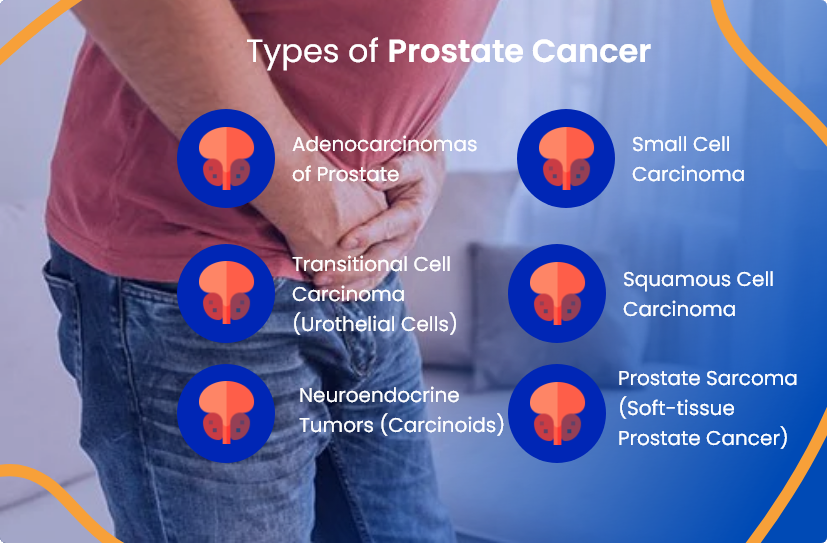
Chemotherapy
Chemotherapy refers to the use of drugs to kill rapidly growing cancer cells. It is administered through a vein in your arm in pill form, or both.
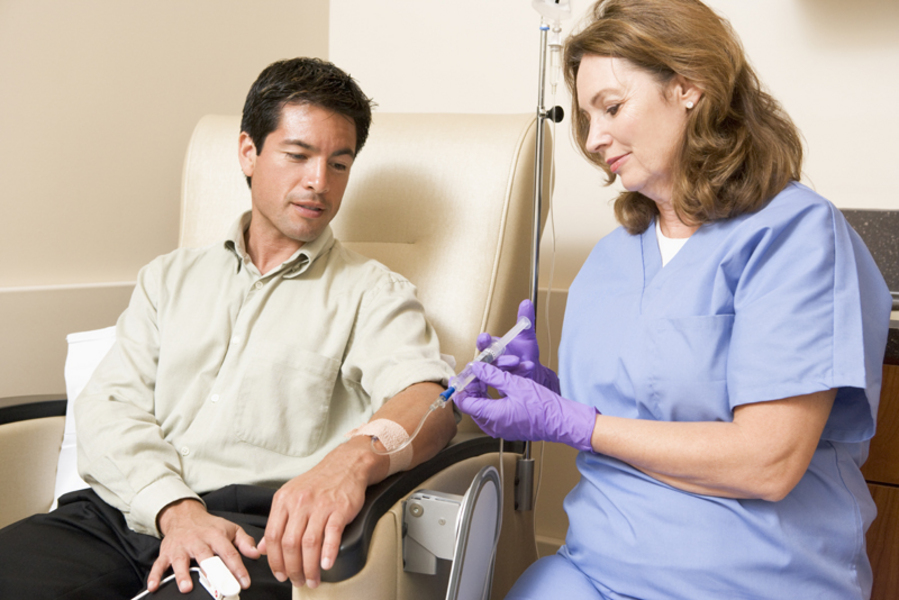
Chemotherapy can be a treatment option for men with cancer that has spread to different parts of the body. It may also be effective for cancers that do not respond to hormone therapy.
Immunotherapy
Immunotherapy involves taking some of your immune cells and genetically engineering them to fight off prostate cancer. It is then injected back into the cells of your body through a vein. Some people do respond to this therapy with some improvement in their cancer. However, this treatment option is very expensive and requires multiple visits to the treatment.
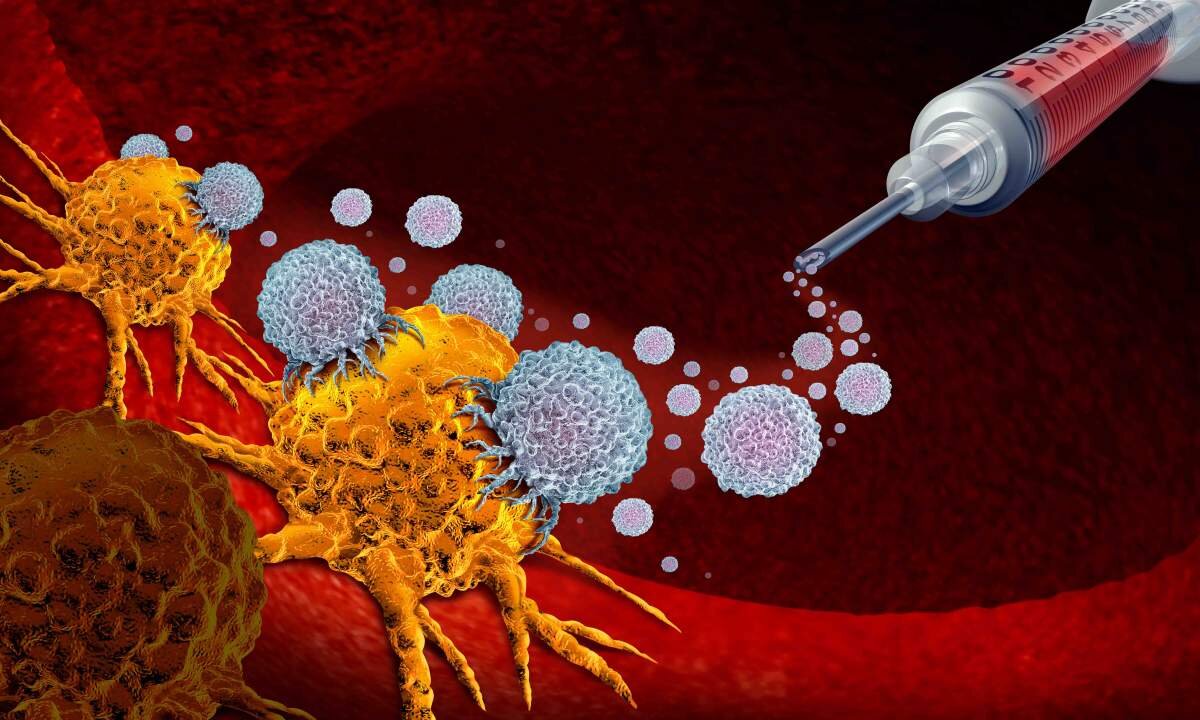
Click here to learn how you can improve your prostate health!
Conclusion
Getting diagnosed with cancer doesn’t mean the end of the world. It is curable when detected and treated early. More than 90% of prostate cancer cases are detectable in the early stages, making the tumors more likely to respond to treatment. Knowing the symptoms and risk factors that cause prostate cancer can help you identify cancer early on when treatment is most effective.


.png)


